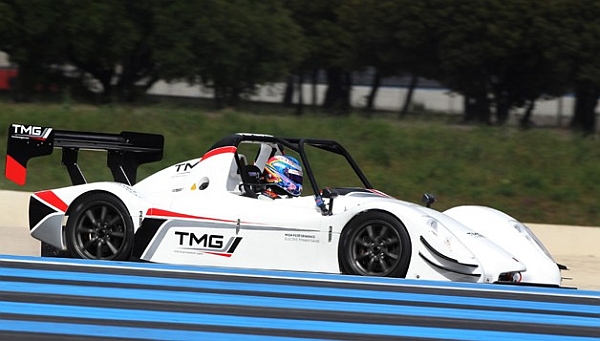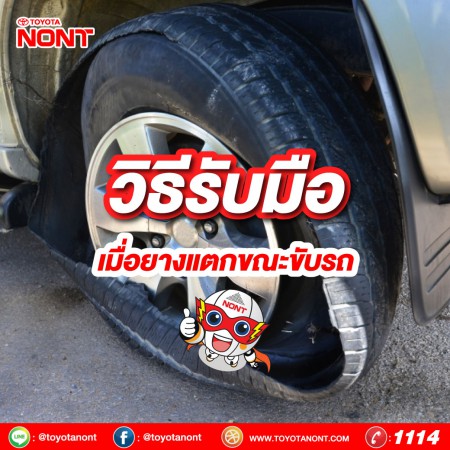

Toyota Motorsport GmbH (Europe)
Toyota Motorsport GmbH is a Toyota division based in Köln, Germany. It was renamed from Toyota Team Europe (TTE) to Toyota Motorsport GmbH (TMG) in 1993. It currently employs around 200 people in a 30,000m2 factory and provides motorsport and automotive services both to fellow Toyota companies and outside clients.
TMG was responsible for Toyota's World Rally Championship cars starting from the 1970s right up to the 1990s. In addition, since 1994, TMG has developed a tuning business for road cars, offering complete vehicles or tuning and sports accessories. In 1999 the company stopped participating in rallying, in order to prepare for a switch to Formula One in 2002. From 2002 to 2009, TMG participated in Formula 1 under the team name Panasonic Toyota Racing, starting 139 Grands Prix. In that time, they finished on the podium 13 times, earned three pole positions and scored a total of 278.5 points. On November 4, 2009, Toyota announced their withdrawal from Formula 1. In the meantime, they entered sports car racing and the 24 Hours of Le Mans: the 1998 24 Hours of Le Mans and the 1999 24 Hours of Le Mans, finishing 2nd in 1999 with the Toyota GT-One. TMG recently has moved back into sports car racing as an exclusive engine supplier from 2011 onwards to Lola Cars, currently powering Rebellion Racing. In 2012 TMG fully returned to sports car competition with the Toyota TS030 Hybrid.
In 1997, it became the first motorsports business in the world to be ISO 9001 certified. TMG continues with a new business model, offering high-performance development, testing and production facilities for clients in the motorsport and automotive sectors
Rally history
TTE was started in London in 1972 when Toyota representatives and Ove Andersson, who won the Monte Carlo Rally in 1971, decided that he should drive a Toyota Celica in the RAC Rally in the autumn of that year. Andersson came 9th, beating other Japanese top teams who mostly worked with the Datsun 240Z.
The Toyota Celica had to travel from Japan to the European events all the time, which was not good for the car, so Andersson set up a workshop of his own, Andersson Motorsport, which became Toyota's first European team. It was founded in 1973 with its workshop in Uppsala, Sweden. Shortly thereafter it moved to Brussels, Belgium. It ran Corollas and Celicas from this location, with some help from Japan for major events. Toyota Team Europe began in February 1975. In August of that year, Hannu Mikkola won TTE's first rally, the 1000 Lakes Rally in a Corolla 1600, where the competition used 2.0 L engines.
In 1979 TTE moved 11 of the 20 employees from Brussels to Cologne, where the Toyota Allee was created. This was also the first time it used a Celica Turbo, and TTE won the next two Safaris.
In September 1987, TTE moved to a larger premises, in which they still reside. It was also the time they revealed their first four wheel drive car, the Toyota Celica GT-Four, driven by Juha Kankkunen and Kenneth Eriksson. Carlos Sainz won the 1990 FIA World Rally Championship Title for Drivers with ST165. The newer GT-Four, ST185, made its debut at the 1992 Rallye Monte Carlo, culminating in Sainz again winning the title in this year. The ST185 also won the WRC Driver's and Manufacturer's Titles in 1993 with Juha Kankkunen, and in 1994 with Didier Auriol.
In 1993 Toyota Motor Corporation bought TTE which then renamed Toyota Motorsport GmbH (TMG). At this time, as a fully owned part of Toyota Motor Corporation, Toyota Motorsport were employing 300 staff from 17 nations.
In 1995 TTE was famously banned for 12 months from the WRC for cheating by designing a illegal air restrictor on the ST205 that included both a bypass mechanism and spring-loaded devices to conceal it from scrutineers.[1] In the 1996 and 1997, despite lack of works team appearance in 1996 due to the ban, TTE supported the Celica ST205 rallied by Italian HF Grifone Team, Toyota Team Sweden, Marlboro Toyota Team Belgium, and Tein Sport in the selected WRC events, before introduced the Corolla WRC in the 1997 Rally of Finland. When they returned to the WRC for 1998, they did so with a Corolla WRC driven by the crews of Carlos Sainz/Luis Moya and Didier Auriol/Denis Giraudet. They finished the season in second overall in both the Drivers' and Constructors' Championships. In 1999, however, the manufacturers championship was taken, the third in TTE's existence.
Sports car racing history
In addition to spearheading Toyota's efforts in the World Rally Championship, the group has also developed and run the Toyota GT-One and Toyota TS030 Hybrid in sports car racing. The GT-One entered the 24 Hours of Le Mans in both 1998 and 1999, and the TS030 Hybrid made its début in 2012.
[edit]GT-One
Introduced in time for Le Mans in 1998, the GT-One first appeared at the official testing days for the race held in May. Three GT-Ones appeared, setting the 2nd, 5th, and 10th best times, easily beating out custom built prototypes which were meant to be the superior class. For the race week itself, all three cars performed admirably in qualifying by continuing their quick pace, qualifying 2nd, 7th, and 8th, being beaten only by their GT class competitor, Mercedes-Benz. For the race itself, the No. 28 GT-One suffered from a high speed accident halfway through the race, taking it out of competition. The two other entrants continued to fight on, both remaining in the top 10. However, within the closing hours, the higher ranked No. 29 GT-One suffered a gearbox failure while in competition for the race win. Thus Toyota was left to take 9th place in the race with the lone No. 27 entry, which ended the race 25 laps behind the winning Porsche 911 GT1.
Their 1999 24 Hours of Le Mans started bitterly after the team was plagued by multiple Michelin tyre failures, the situation becoming somewhat reminiscent of 1998, when the No. 1 & No. 2 car were retired. Martin Brundle in the No. 1 Toyota suffered a puncture at high speed on the Mulsanne straight, the cars rear suspension was badly damaged and he was unable (despite his best efforts) to get back to the pits. The No. 2 Toyota being driven by Thierry Boutsen was next to go when he suffered a high speed crash under the Dunlop bridge due to a rapid deflation. The car was destroyed and Boutsen suffered injury to his lower back. At the break of dawn, the No. 15 BMW was almost a lap ahead of the No. 3 Toyota which had been quietly cruising around at a steady pace. With this sniff of a win Ukyo Katayama put the foot down in the Toyota and set the fastest lap of the race. He narrowed the gap to less than a minute till again a tyre blowout befell the Toyota team again. Ukyo was however able to return to the pits for new tyres and continued. He managed to finish second after a valiant effort placing first in the GT-P class. However, they fell short of the overall victory at Le Mans, which would have made them only the second Japanese manufacturer to get an overall win (Mazda being the first in 1991).
The GT-One raced only once more, a single entrant appearing in the 1999 Le Mans Fuji 1000km. Although the race mostly consisted of Japanese teams, thus leaving out most of the manufacturers that had competed at Le Mans, Toyota still had to compete against rival Nissan, who also entered their R391. In the end the GT-One would fall short once again, finishing 2nd and only one lap behind the winning R391. The GT-One program was not continued into 2000, Toyota instead turning TTE into leaders of the new Toyota F1 team. This would mark the end of Toyota's attempts at Le Mans, and would return over a decade later to once again contest at the top tier of sports car racing.
Toyota TS030 Hybrid
In October 2011, Toyota announced its return to Le Mans in 2012, with a hybrid-powered Le Mans Prototype, sporting a petrol engine similar to that found in their customer P1 car. The car would be entered in the inaugural season of the FIA World Endurance Championship, though it would miss the first round of the series.
Toyota suffered a severe setback with a crash in late April preventing the debut of the car at the 2012 6 Hours of Spa-Francorchamps, but managed to get two TS030s ready by Le Mans. Unfortunately, neither car finished the race: the #8 car being driven by Anthony Davidson suffered a massive crash with a Ferrari 458 (which also damaged two of Davidson's vertebrae), while the #7 car hit the DeltaWing and later retired with an engine failure.
Toyota continued to compete in the rest of the WEC season with a single car, collecting 3 wins including the 6 Hours of Fuji
In addition to its motorsport activities, Toyota Motorsport also undertakes production vehicle analysis and development on behalf of Toyota, providing "highly skilled and rapidly reacting engineering" services. A range of modified Toyota road cars is also available from the Köln factory.
Current business
The company is currently headed by president Yoshiaki Kinoshita, the man formerly in charge of Toyota's global motorsports programme and previously its Champ Car engine development. Former F1 technical director Pascal Vasselon is General Manager Chassis Engineering while Jens Marquardt, the former F1 team manager, has become the head of business development, although he will join BMW Motorsport in 2011.
Toyota Motorsport is working with "a few dozen" customers on various projects, not all of which are from the motorsport world. Several major projects, including an iQ sports conversion, are being carried out for parent company Toyota Motor Corporation. According to the company's 2010 annual review, Toyota Motorsport has hit its financial targets for the year.
Toyota Motorsport is providing a TF109 F1 car to Pirelli for tyre testing at various circuits in preparation for the Italian company becoming F1's sole tyre supplier. Very few details are available regarding the identity of other customers, although media speculation says several leading F1 teams are using Toyota Motorsport's two modern wind tunnels and other testing rigs.
Currently Toyota Motorsport supplies and supports Toyota 3.4L V8s for Rebellion Racing as a partnership with Lola Cars. TMG also runs the Toyota TS030 Hybrid in the FIA World Endurance Championship in conjunction with Oreca.
In October 2010, rumours appeared in the media that Toyota Motorsport had been sold to the HRT F1 team. These were denied by Toyota Motorsport.[5] Their machinery was eventually acquired by Stefan Grand Prix, with TMG support. After a failed bid for the 2010 season, Toyota and Stefan Grand Prix parted ways, closing out any possible chance to see Toyota Racing return in any form to Formula 1.
TMG EV P001 electric car
The company revealed in its annual review[when?] that it has developed an electric racing car based on the Radical sportscar, along with Cologne company e-Wolf. The TMG EV P001 was developed using knowledge Toyota Motorsport gained during its KERS development for F1 and used some of the company's dedicated engine dynos, including an 'EV component test rig'.[citation needed] In August 2011 it set a new lap record for an electric vehicle at the Nürburgring Nordschleife of 7mins 47.794secs.The company says this proves the ability of their technology to be competitive in racing, and that they would like to enter an electric championship.








